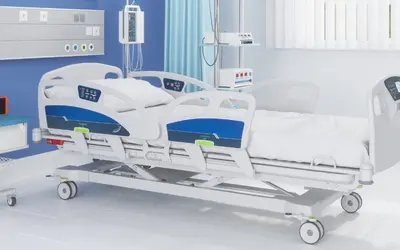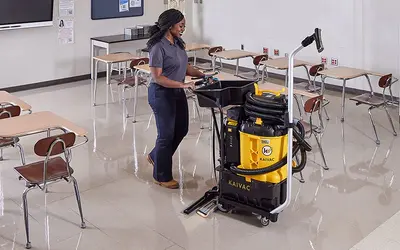Infection Prevention Basics for Healthier Commercial Cleaning

Infection prevention is a hot topic for cleaning professionals and facility managers. But what does the term mean, exactly?
Different than cleaning for health, infection prevention is a healthcare practice designed to reduce and prevent Healthcare-Associated Infections (HAIs). One of the first units introduced in nursing education programs, infection prevention encompasses everything from proper hand hygiene to safe injection practices to vigilant sterilization of medical equipment.
While there is an important environmental cleaning and disinfection component, most infection prevention practices do not apply to maintenance professionals outside of healthcare settings. However, the discipline does offer valuable lessons for facility managers to learn and communicate to clients and staff.
Here’s a primer to get you started.
Infection Prevention, HAIs, and Lessons for the Rest of Us
Healthcare-associated infections are no joke. The most common complication in hospital care, HAIs are one of the top 10 leading causes of death in the United States. About one in 10 people admitted to the hospital contract an HAI, with urinary tract infections, surgical site infections, gastroenteritis, meningitis, and pneumonia most common.
HAIs also place enormous financial burden on hospitals, with overall direct cost estimates ranging from $28 billion to $45 billion.
Because of this high level of human suffering and cost liability, healthcare is the only sector that actively tracks infections that originate within a building. There are even specialists, known as Infection Preventionists, whose sole job is ensuring healthcare workers and health facilities are doing everything they can to prevent infections from spreading. The field is so hot right now that Netflix and other entertainment companies have hired infection preventionists to keep casts and crews healthy during the pandemic.
This is where savvy, non-healthcare facility managers can take a page from the infection prevention handbook. Start thinking like an infection preventionist and communicate your ideas to management. Make the business case to track employee and/or student absenteeism. Note the costs of reduced productivity due to absenteeism. Stress that proper cleaning can cut down on community-acquired infections like influenza, norovirus, and the common cold that cause absenteeism.
Infection Prevention Terminology to Know
Here are some common terminologies and definitions to help you frame your thinking and start talking like an infection preventionist.
- Infection Prevention/Infection Control: These terms are used interchangeably. Both refer to steps taken to reduce the spread of infections within a health care setting.
- Infection versus Disease: Not the same thing and not interchangeable, according to the Mayo Clinic. Infection occurs when microbes like bacteria, fungus, or viruses enter the body. Disease is when these infections damage the body, which shows signs and symptoms of illness.
- Fomite: Any inanimate object that can transfer disease to a new host. Fomites play a role in both Healthcare Associated Infections and community acquired infections. Common fomites include doorknobs, toilet flushes, elevator buttons, and any other frequently touched but rarely cleaned surfaces. Even the floor can be considered a fomite. Illness spread through fomite transmission include cold sores, influenza, and diarrhea.
- Airborne transmission: Transmission is how infections get into the body and cause disease. Airborne transmission describes diseases transmitted through small respiratory droplets. The droplets travel along air currents and linger long enough for a new host to inhale them. Diseases spread through airborne transmission include measles, tuberculosis, and COVID-19.
- Virulence versus Infectivity: This gets a bit tricky as these terms describe different characteristics of the cause of disease. Infectivity is the ability of an infectious agent to pass from a sick person to a healthy host and cause disease. Virulence describes how sick that person will get. Some disease, like the common cold, have high infectivity (meaning everybody gets it) and low virulence (but they don’t get that sick). Ebola, on the other hand, has high virulence and low infectivity. Not many people get Ebola, but it is frequently lethal for people who do.
Cleaning for Public Safety
Infection prevention encompasses so much more than regular maintenance. However, cleaning to prevent disease plays a vital role in public safety. Kaivac offers a variety of tools and techniques, from hospital-grade disinfectants, surface cleaning tools, and cleaning measurement technologies, to help you remove pathogens safely, quickly, and completely.
Click here to learn more.


